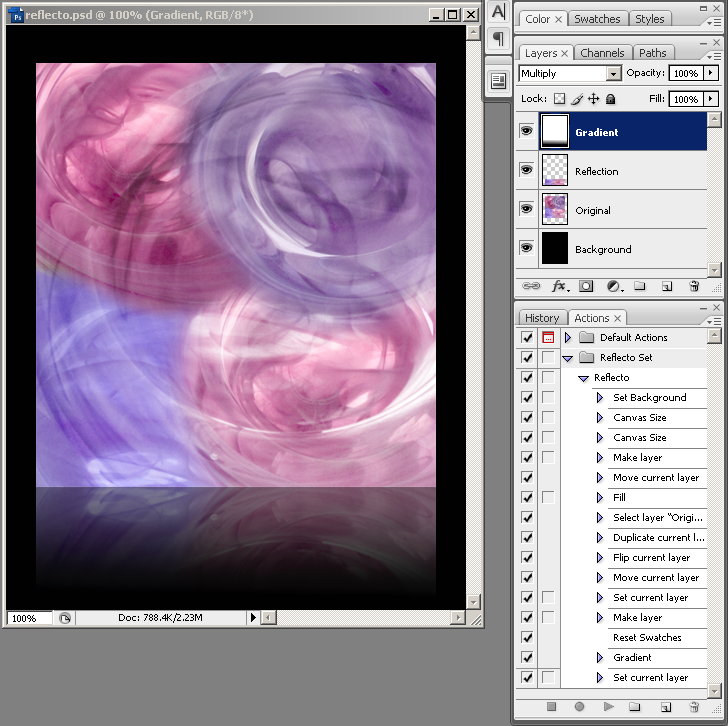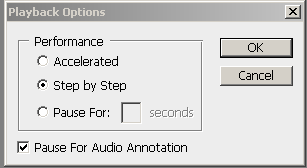Book Review: The Designer's Apprentice
Book Review: The Designer's Apprentice
Automating Photoshop, Illustrator and InDesign
By Nathan Segal
|
Author: Rick Ralston Total Pages: 256 Publisher: Adobe Press Copyright: 2007 ISBN:0321495705 |
One of the challenges facing computer artists is productivity, especially with repetitive tasks. Fortunately, automation can ease the drudgery and that is the subject of "The Designer's Apprentice: Automating Photoshop, Illustrator and InDesign," published by Adobe Press and written by Rick Ralston.
Note: This book is a available as printed format as well as a downloadable PDF.
Once you register the book, you can download several Zip files that accompany the chapters. All of the files were possible to download but the last one. I wound up with an error when trying to access it.
Overview
The book is broken down into three sections with a total of 12 chapters. Part 1 covers concepts, part 2 covers tools and part 3 is the projects section. There's also an appendix at the back of the book. The chapters are:
|
To get the most out of this book, proficiency with at least one of the creative suite applications is important. If you don't have that, it will slow down your learning process. In the first section of the book, you're given a general overview of automation and how it affects our daily lives, with such activities such as breathing, the heart beating or making a pot of coffee. According to the author, if we take a look, we can easily see that automation supports a large part of our daily lives.
From a software perspective, automation is a set of editable commands that a computer can use to accomplish a task. The author describes a software process as an Agent. Agents may appear to be complex, but can be summarized as follows:
|
Part 2 of the book focuses on tools and the section begins with a tutorial about creating an action that produces image reflections in Photoshop.

The Reflecto actions tutorial, showing the finished image, the layers involved in creating it and the list of actions.
Note that for an action such as the one above to work successfully, it has to be used with an original image of the same size as the one in the tutorial.

When you play an action, there are several options available, which you can access through: Actions Panel Menu: Playback Options. The Accelerated option is selected by default, but you can choose Step by Step or Pause For: x seconds. In this tutorial, I chose Step by Step with a setting of 5 seconds so I could see what was happening with the action. This is especially useful if the action doesn't play back properly.
When recording actions, it's important to keep to the script (in this case, the tutorial). If you deviate from that, as I did initially, you'll create extra steps and the action might not work properly. Fortunately, you can edit your actions and add more information, delete commands, reorder them and turn them on/off. This is a great way to test them. In this chapter you'll also learn about action management, running batch actions and more.
Chapter 4 covers scripting languages that you can use, including: AppleScript, JavaScript and VBScript. As to what choice to make, AppleScript is probably the best one, unless you need scripting to work on both Macintosh and PC platforms. In this case JavaScript is recommended. If you're familiar with Visual Basic, VBScript is another option.
Chapter 6 covers data-driven publishing (a.k.a variable-data publishing, data merge and dynamic publishing), which is about creating variations of a document by changing out specific text and images. This is especially useful if you're creating hundreds or thousands of variations.
Chapter 8 takes a look at server-based applications. One of these options is Debabelizer, which is a good program for automating tasks. Photoshop can do the same thing, with scripting and actions but Debabelizer combines scripting and actions in one place. The down side is the price - another $550.00 on top of Photoshop.
In section 3, we get into the projects, covering Photoshop, Illustrator, InDesign and finishes with a project for a fictitious client that uses all three applications. Unfortunately, this section doesn't offer as much depth (on Photoshop) as I'd hoped. As a case in point, Chapter 9 is only 19 pages long. And even though the chapters come with supporting files, I wanted more.
Conclusion
Overall, The Designer's Apprentice is a good book for the artist working with many applications. It introduces you to many options for automating your projects, but if you're working with only one program, such as Photoshop, I recommend that you check out: Al Ward's Photoshop Productivity Toolkit: Over 600 Time-Saving Actions and Photoshop CS2 Actions and Automation.
Created: September 26, 2007
URL:


 Digg This
Digg This Find a programming school near you
Find a programming school near you